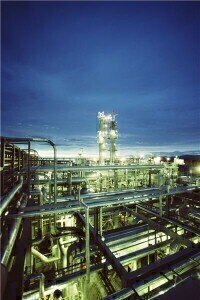Measurement and testing
Temperature, Pressure and Level Switches Now with SIL2 Approval
Jan 17 2008
device applications.
The process industry demands the highest degree of safety and reliability these days. The current Safety Integrity Level (SIL)
international safety standard provides suppliers and users with
a common framework on which to design products and systems for safety related applications. The standard also provides a more scientific, numerical approach to specifying and designing safety systems, enabling the nature of the risk to be quantified SIL means risk reduction to a tolerable level. The required safety level of a process plant is classified in accordance with the international IEC 61 511 standard and depends on the risk constituted by a plant. The IEC 61 508 standard describes the requirements of electrical, electronic and programmable electronic devices used in such plants. Both standards subdivide plants and devices into 4 safety levels, from SIL1 for low risks, to SIL4 for very high risks. The allocation to these safety levels is based on the use of a risk graph and depends on; extent of possible damage, frequency
of persons present in hazardous areas, possibility of damage prevention and probability of an unwanted event occurring.
The standards also describe the type of risk assessment and procedures for integrating certain safety functions into sensors and plants. Generally, the significant hazards for equipment and any associated control system have to be identified by the specifiers or developers via a hazard analysis. The analysis identifies whether functional safety is necessary to ensure adequate protection against each significant hazard.
Examples within safety related systems for mechanical engineering include auxiliary disconnected systems; fire detector and gas warning systems; monitoring of turbines; safety interlock and auxiliary disconnected systems for machines; devices for medical applications; and remote monitoring based on network, handling and programming of
procedural constructions.
Digital Edition
PIN 26.1 Feb/Mar 2025
March 2025
Analytical Instrumentation - Elemental Analysis for Quality and Process Control at Refineries, for Lubricants and Wear Metals in Engine Oils - Synthetic Lubricants: New Developments - Scaling...
View all digital editions
Events
Mar 17 2025 Houston, TX, USA
Mar 18 2025 Beijing, China
Mar 19 2025 Manila, Philippines
Mar 20 2025 Brussels, Belgium
Mar 20 2025 Guangzhou, China


.jpg)






.jpg)

.jpg)







